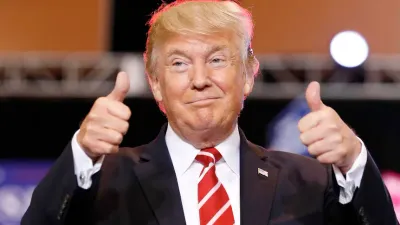

A picture Montage of Out going USA President Donald Trump and President elect Joe Biden
Four years ago in November, this column penned about the United States presidential two-tier voting system that; “US Electoral System is confused”. An addition to it now is that, it is not simply complicated, unrealistic and disturbing; in its utmost sense, it is un-democratic.
There is the popular vote; and then the Electoral College. The popular vote is simple enough: the contestant who garners the greatest number of votes would be declared the winner. That is not so in the US system.
They have to take into account the Electoral College vote, of the 538 “electors” from the 50 states and three from the headquarters, Washington, the District of Columbia. This also represents Congress; the Senate and the House of Representatives.
The electors, referred to as delegates will vote after the popular vote is counted. If the candidate gets 270 electors’ votes; even if the popular vote had decided that the winner be the one who had got the majority of ballots, the popular contestant loses the presidential elections.
This is what happened to Hillary Clinton four years ago; that was what happened to Al Gore, four years earlier. Clinton polled four million ballots more than Donald Trump, but lost the presidential election, as Trump got 304 Electoral College votes.
In its long polling history, since the Constituent Assembly met in 1787, and established the Electoral College by Section 1 Article 2, of the US Constitution, it has happened to five of the 45 presidential contestants. In turn, it reflected the issue of the balance of slavery between the southern and northern states at the time; which has now been replaced by the Congressional districts and State representatives.
It was a compromise between those who wanted the popular vote and those who wanted Congress to appoint the president. And those 538 electors also represent the parties; in this case the Republicans, Democrats and other inconsequent ones.
It also mirrors the states, where the electors are allocated by the population, proportionately elected to represent the larger and smaller populations.
Why have the two systems, at all? The argument is that it balances the populations of the smaller against the big states and preserves the element of federalism. Also it points to what are called Blue (for the Democrats) and Red (for the Republicans), states that are considered “safe” for either party.
That leaves the “Swing States”, or battleground states, that the electors can vote in, either way. These are: Florida, Pennsylvania, Michigan, Ohio, North Carolina, Arizona, Wisconsin, Iowa, Nebraska and Maine.
In that case all the electoral votes of the swing state go to the candidate who triumphs in the state.
This column in 2016 asked: “What is the point of counting the popular vote if at the end of the exercise the reliance is put on the electoral vote?” This sentiment has now been taken up by US intelligentsia. Prof. Erwin Chemerinsky, the Dean of Law at the University of California, Berkley, says: “I’m very concerned about the Electoral College.
We are the only country in the world that thinks of itself as a democracy, where the candidate who loses the popular vote can be president. I think the Electoral College should be abolished and the winner of the popular vote should be the president of the United States.” (This columnist has visited Berkley).
In this polling confusion, a number of issues have come up, but overall globally, it is agreed that the US election will impact the whole world, as it is a superpower.
Those issues have ranged from trade, nuclear proliferation, digital technology, US race relations, Covid-19 and Trump’s global “America First” sloganeering. Of recent, this last one is likely going to affect Africa, if Trump wins the poll.
His Middle East policy has come to affect Sudan and Egypt. For Sudan, its declaration that it will normalize relations with Israel is already causing problems in the area. Sudanese opposition politician, Sadiq al-Mahdi, is now warning that it is likely to bring a new war in the Middle East between Israel and the Arab states.
Trump stokes this fire by his recent promise that Egypt will at “one time or other, have to blow up” the newly-built Ethiopian Renaissance Dam.
This reflects US frustration’s failure to mediate between Egypt and Ethiopia over the matter of the control of the water of the Blue Nile as it flows to the Mediterranean Sea. Egypt heavily depends on the normal flow of water for its agriculture, the mainstay of its economy.
As such, Trump’s tantrums are moving his foreign policy to Africa, and specifically, East Africa. The bulk of the Nile is the White Nile which flows from the East African Lake Victoria.
The moment one affects the Blue Nile, the effects of it are not far off from where the Nile originates – Uganda – in the case of the Renaissance Dam, the result of the US elections will impact on Uganda.
szumuz@yahoo.com














Ikebesi Omoding
Ikebesi Omoding is the acclaimed author of a weekly column titled: From the Outside Looking In
Leave a Comment
Your email address will not be published.